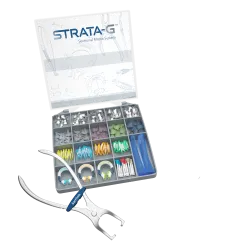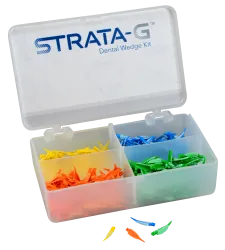Following a diagnosis of carious lesions on the distal walls of teeth 14 and 15, the defects were resolved by conservative therapy. Using the new Strata-G ™ orange and blue separator rings, it is possible to deal with multiple restorations on the same tooth by stacking the two rings. The perfect inclination of the Nitinol arcs, in fact, means that there is no interference and clutter between the two separating rings and that the silicone terminals remain, consequently, well oriented parallel to the interproximal surfaces to be reconstructed. In order to obtain effective contact areas and emergency profiles appropriate to the need of the clinical case in question, wedges and Strata-G ™ matrices were used for the reconstruction of both interproximal walls.

|
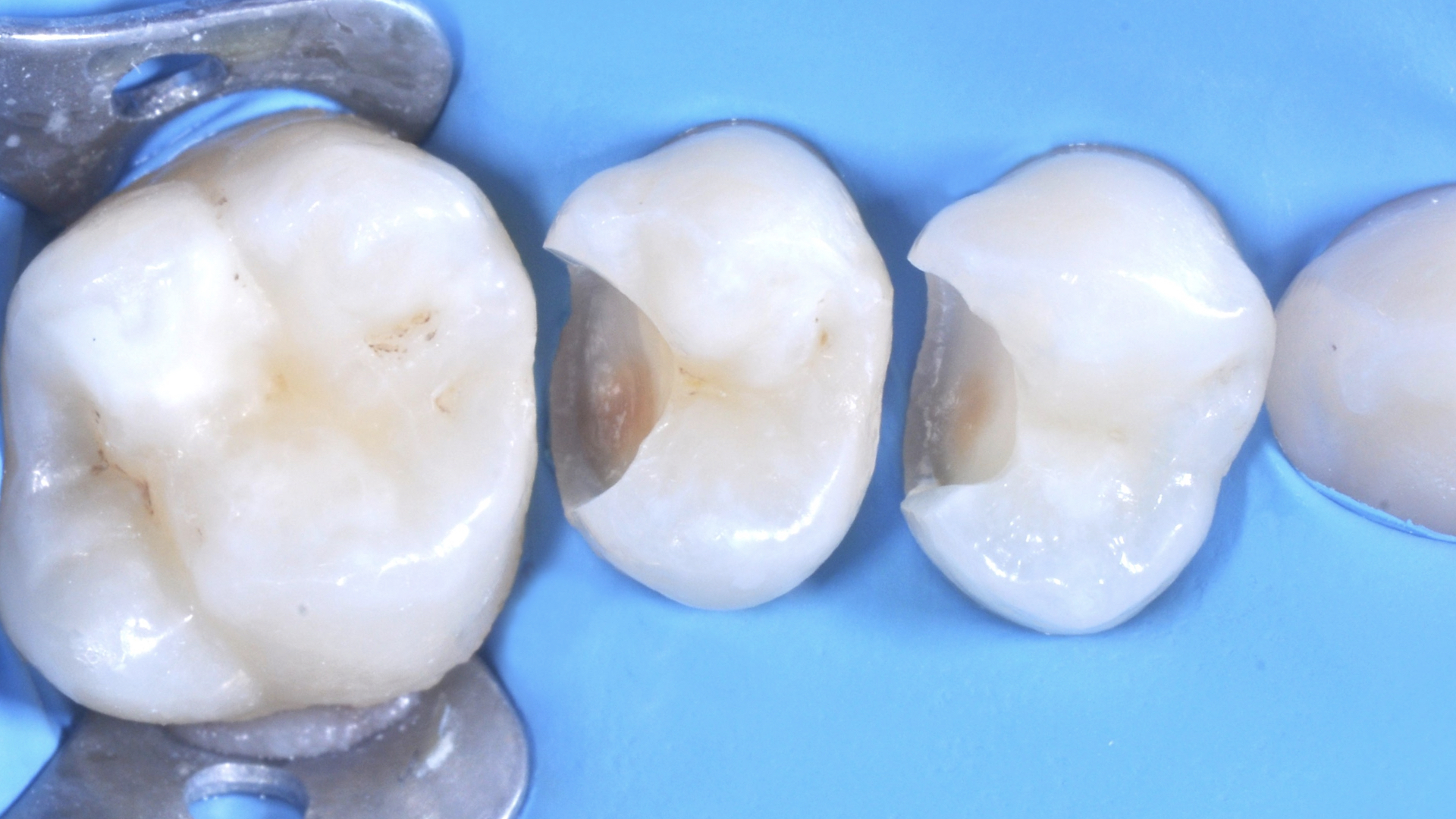
|
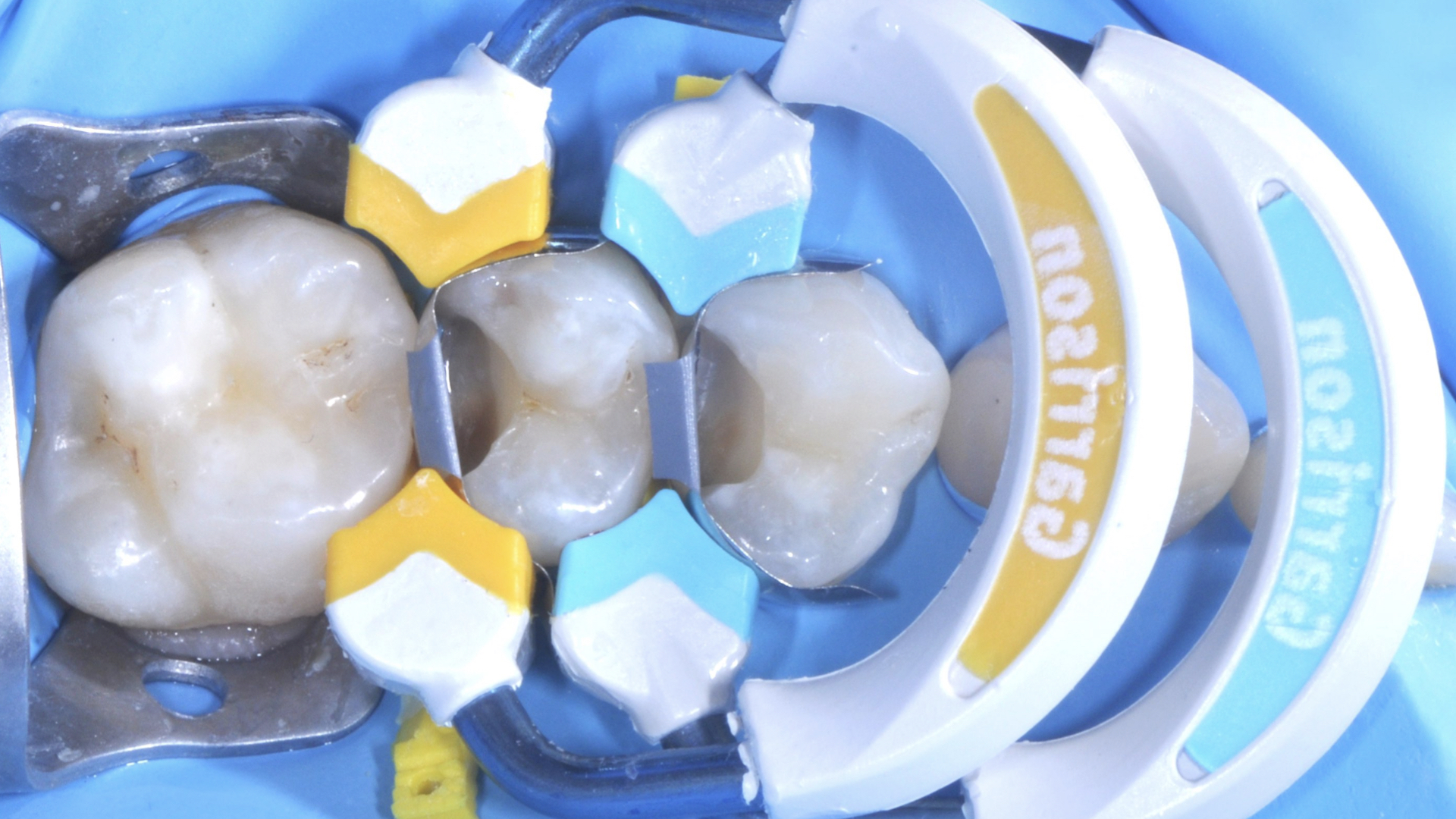
|
| Figure 1: Preoperative situation: Teeth 14 and 15 suffering from carious injuries to the distal walls. | Figure 2: Decontaminated distal interproximal boxes and finished under isolation with rubber dam. | Figure 3: Using the gray Strata-G™ sectional matrix bands in combination with orange and blue Strata-G™ separator rings used simultaneously. The marginal adaptation to the cervical step is obtained by yellow Strata-G™ wedges. |

|
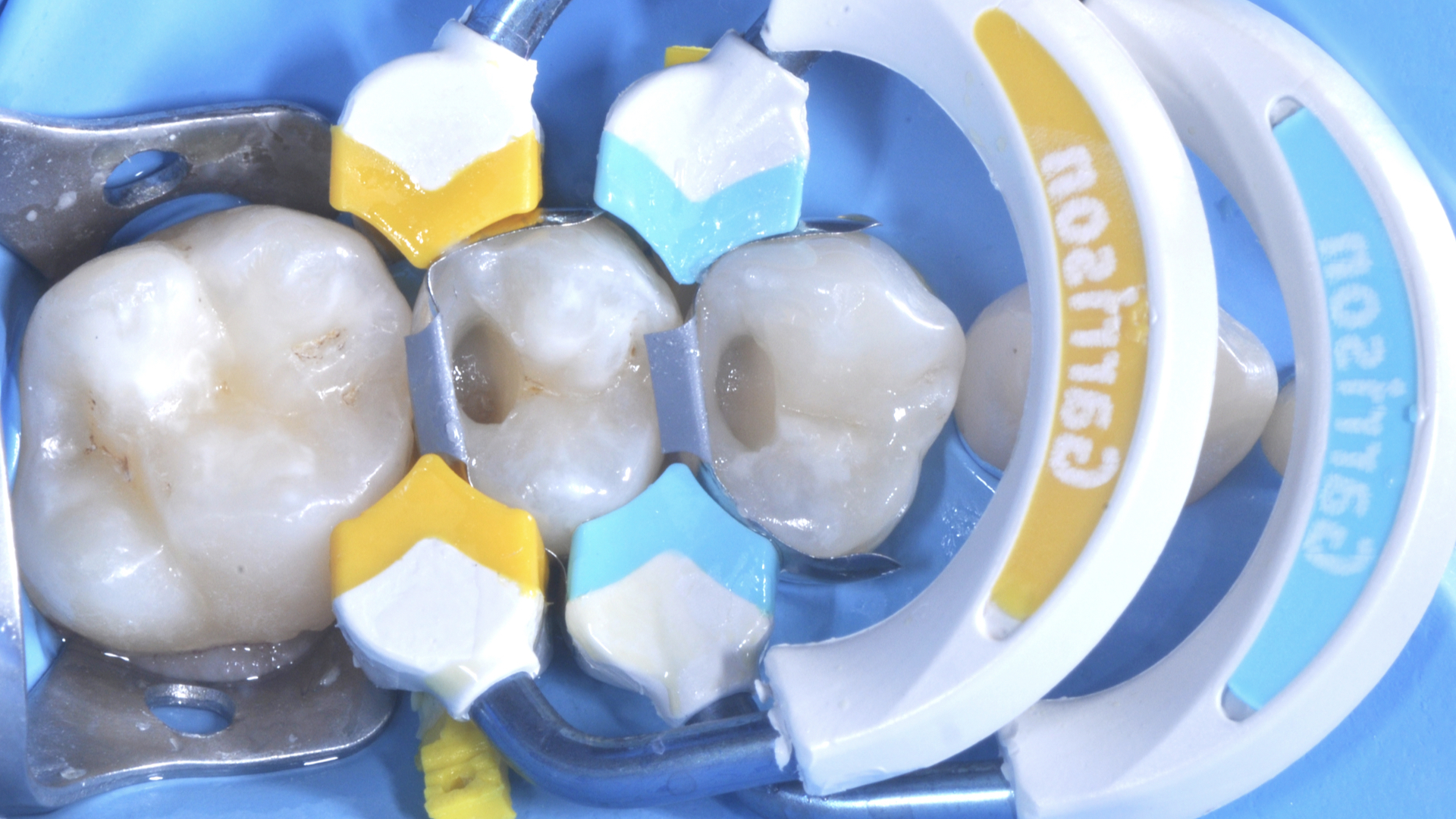
|
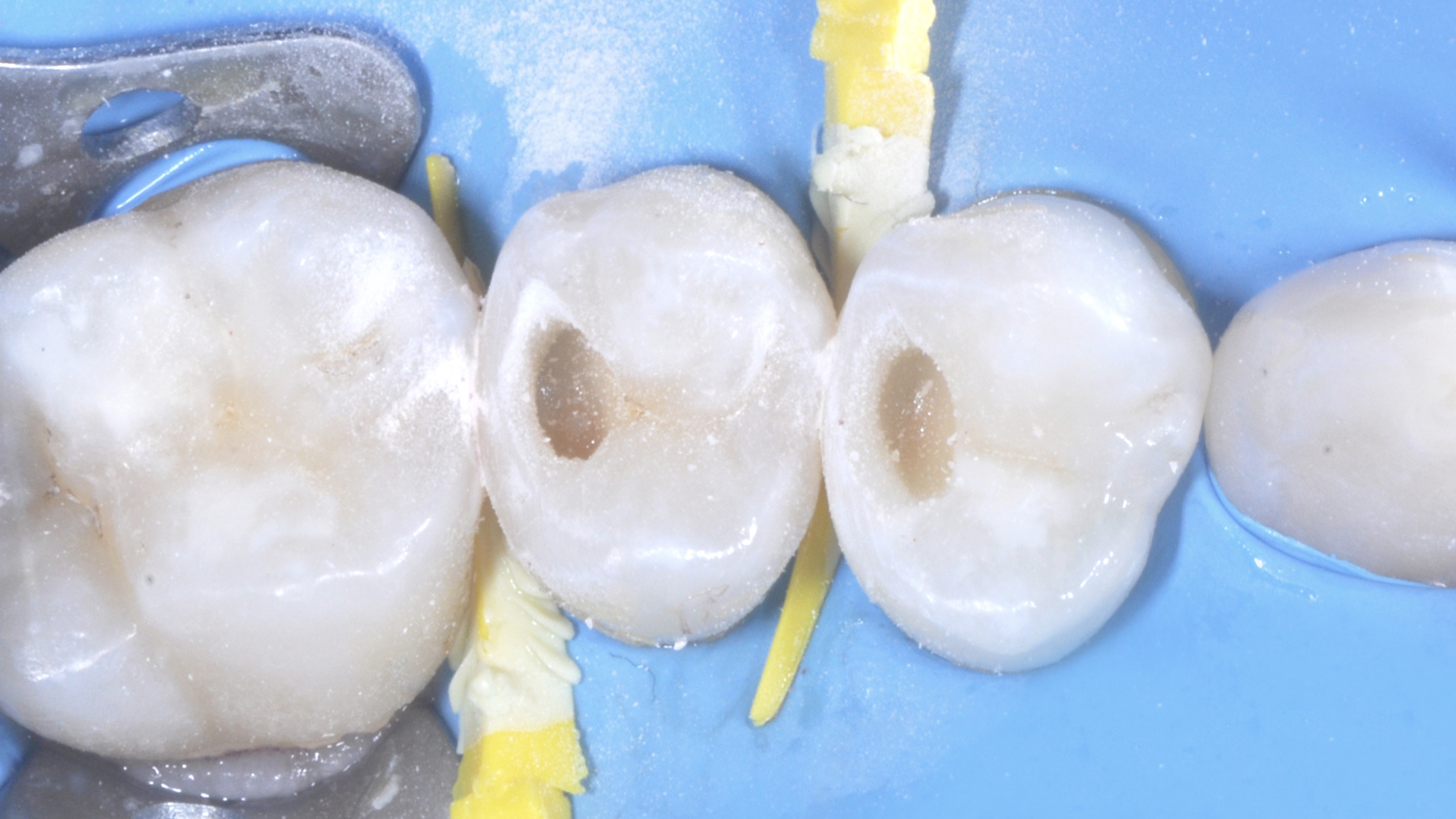
|
| Figure 4: Side view of the interference free overlap of the two Strata-G™ separator rings | Figure 5: Reconstruction of interproximal composite walls. The re-entry of the matrix, in its coronal portion, in the direction of the occlusal table of the teeth involves a reduced need for anatomical modeling of the coronal portion of the wall in favor of a better ability of the restoration to ensure a correct axial discharge of the masticatory forces towards the center of the restored dental tooth. | Figure 6: Interproximal walls created according to the Centripetal Build Up Technique and finished before the completion of occlusal restorations. |
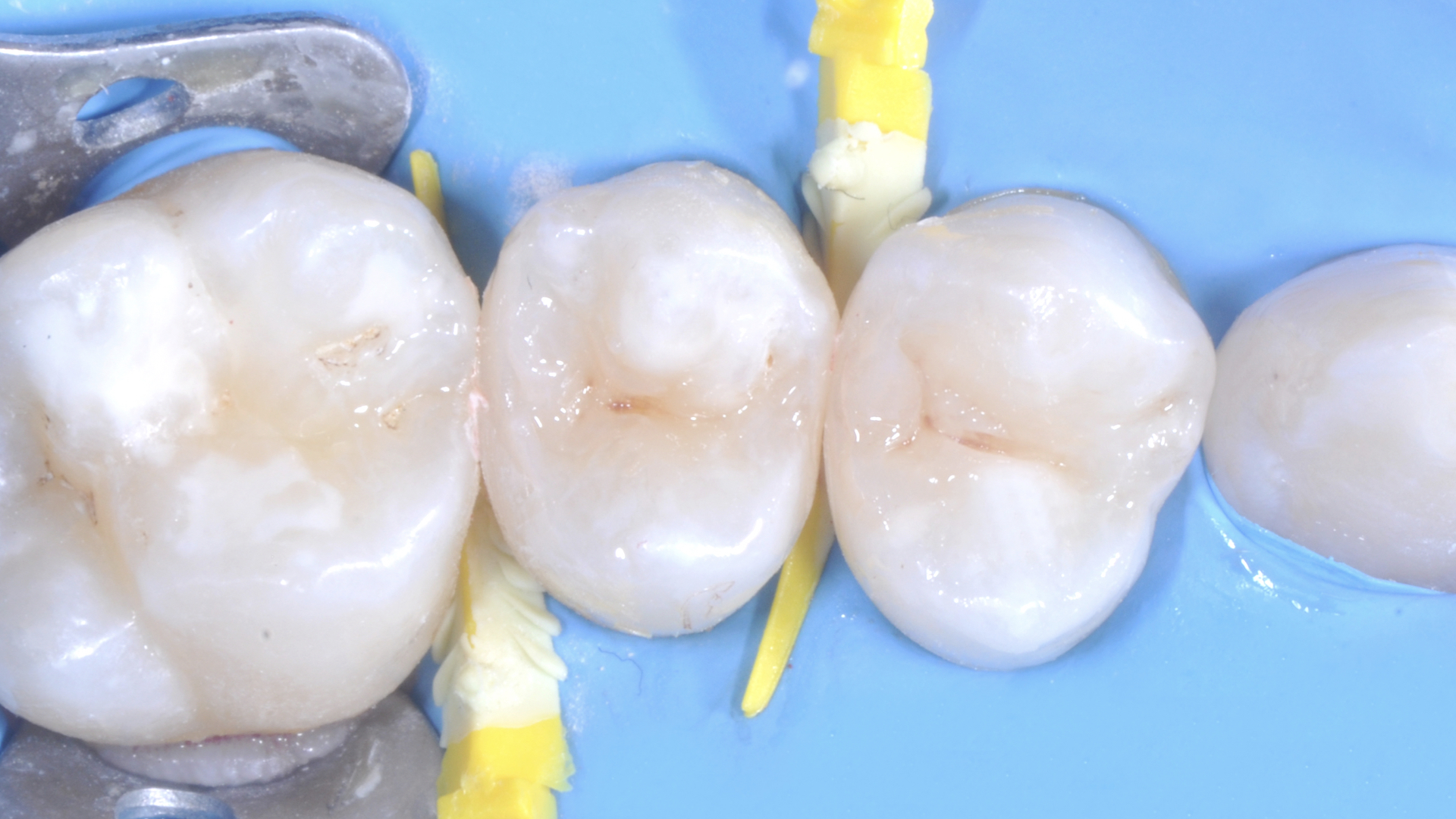
|
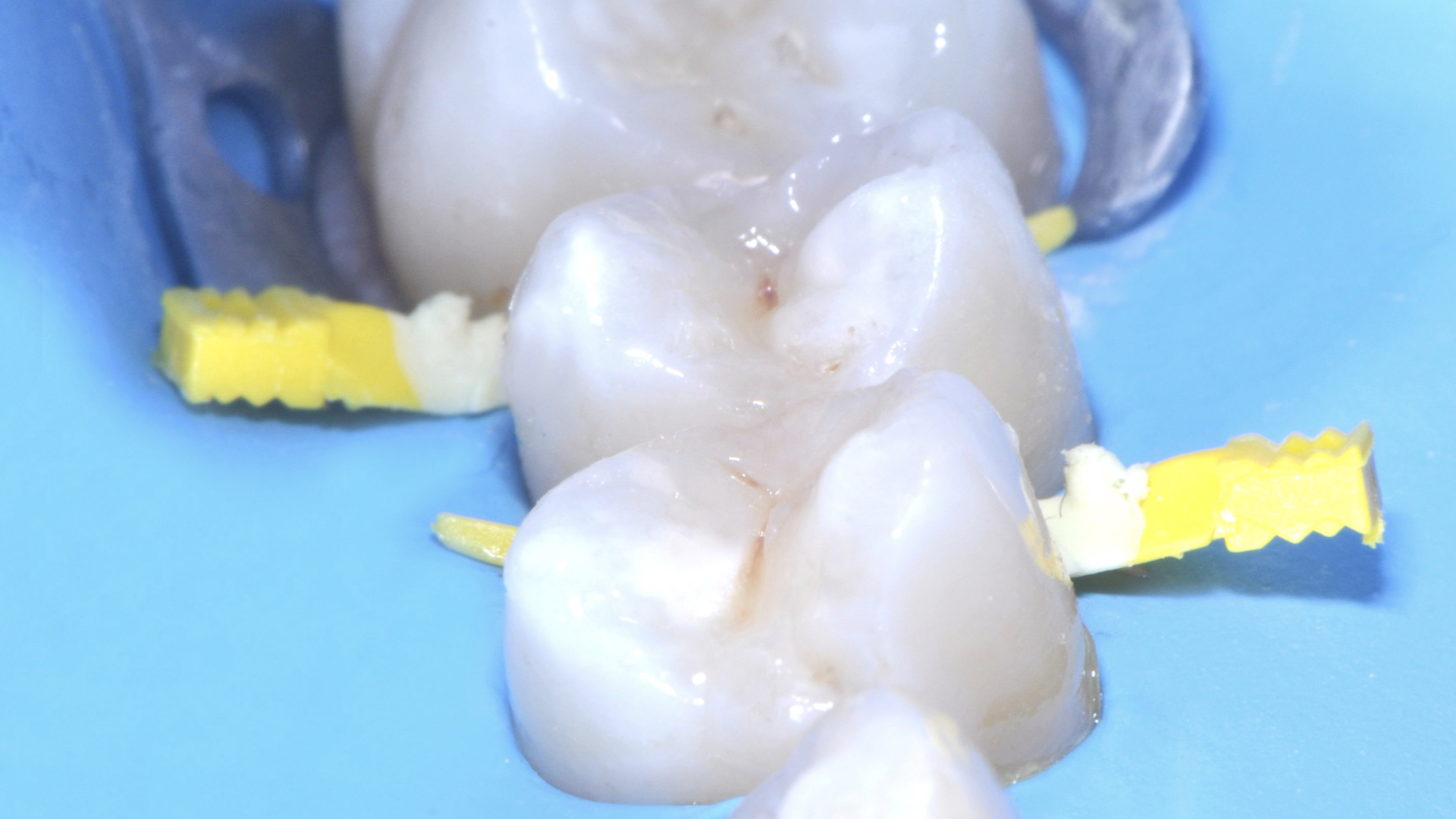
|
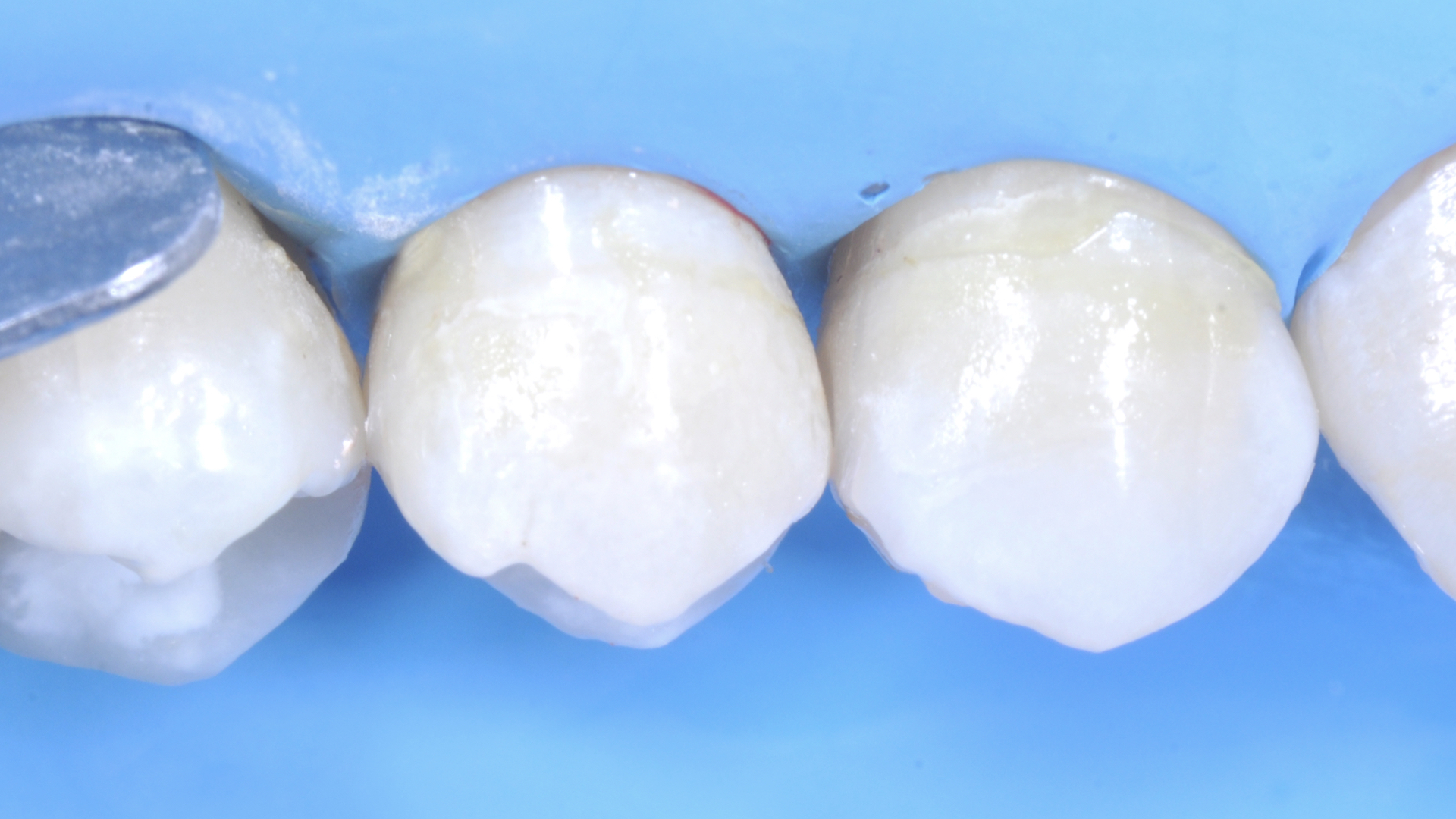
|
| Figure 7: Completed restorations. | Figure 8: Cross-view of restored marginal ridges. | Figure 9: Side view of the quality of contact areas obtained by Strata-G™ sectional matrix system. |
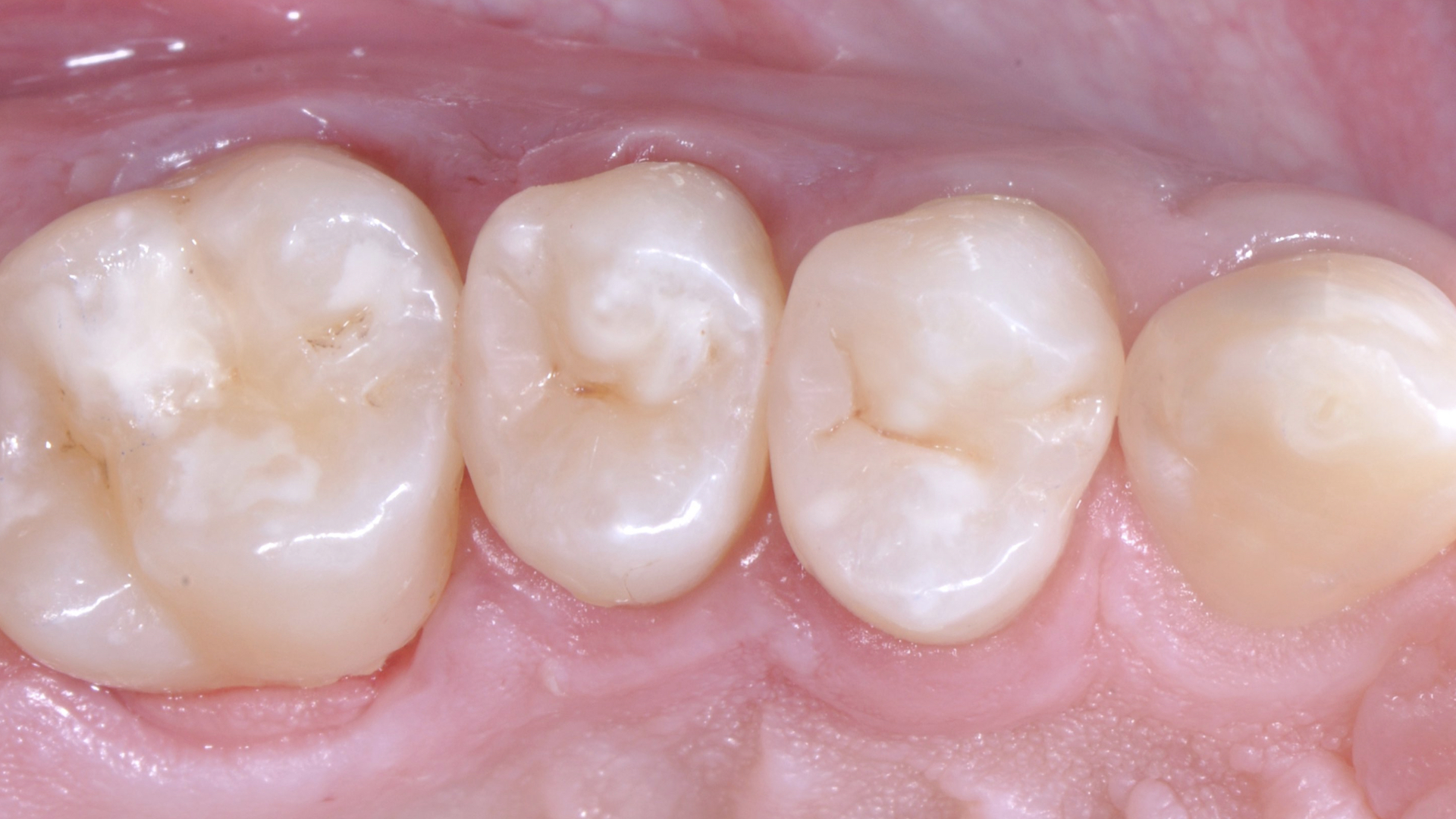
|
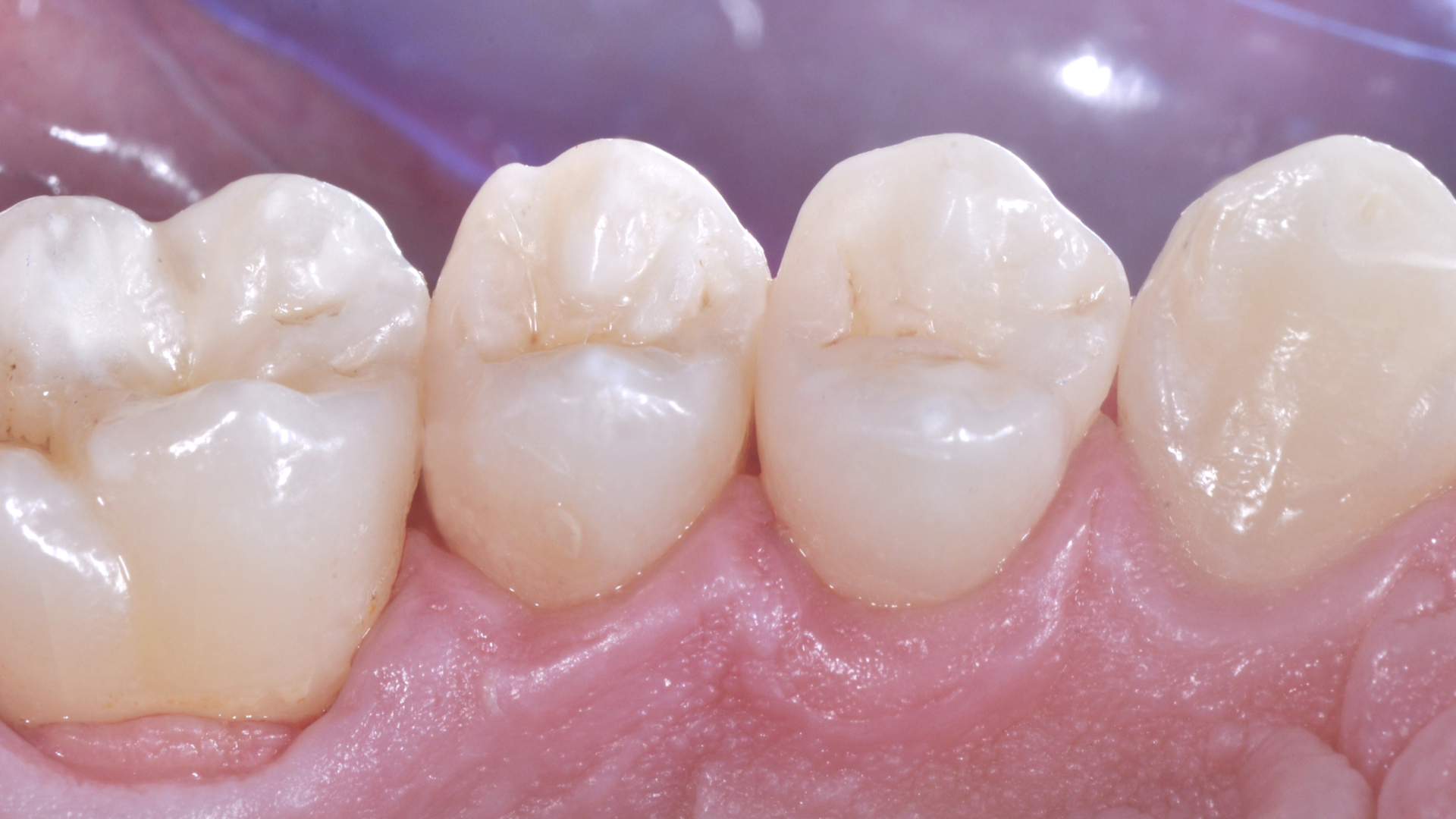
|
| Figure 10: Occlusal vision of restorations performed on the distal walls of teeth 14 and 15. | Figure 11: Lateral, lingual, reconstructed distal wall view with effective and large interproximal contact areas |
